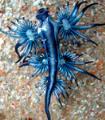
DMT-Nexus member
Posts: 131 Joined: 06-Nov-2012 Last visit: 04-Oct-2014 Location: Hyperborea
|
This is the only real Phalaris on the page! lol Well done VIII. Except for Arundinacea, the confusing one, they all have similar looking flowers. Like developing wheat but denser and shorter length, and fatter in the case of Brachyastachys. Look carefully at the known pics, like VIII's. This thread is like a guide to Grasses Which Are NOT Phalaris 
|
|
|
|
|

DMT-Nexus member
Posts: 103 Joined: 29-Oct-2012 Last visit: 14-Jan-2014 Location: Paris, Texas
|
Well, a Banshee agrees with a Monk!  ^What He said! lol
|
|
|

Why not?
Posts: 11 Joined: 16-Nov-2012 Last visit: 15-Mar-2013 Location: Neverwhere
|
THANK YOU for the WONDERFUL thread, you my friends have helped tremendously with my mimosa drought! "Take care of yourself. Do not let the winds of change blow away what is best in you, and time will serve you well. It can be all too easy to be swept up by the tide. Keep your powder dry and your vote in your back pocket, and you will be rewarded for your strength when we pass." -- Hiyo Quicksilver Tips for Ayahuasca useTips for DMT use
|
|
|
member for the trees
  
Posts: 4003 Joined: 28-Jun-2011 Last visit: 27-May-2024
|
^..yeah, the mimosa drought..well, according to an ag paper: " Phalaris has the best 'design features' to survive the stresses of our environment. The drought resistance of phalaris comes from the combination of its unique ..."  The Meddling Monk The Meddling Monk made a very good point on ID of Phalaris.. i've attached some images below to help guide.. i) is of Phalaris minor, it has worldwide distribution, including California..and it contains DMT and other alkaloids. __the flower head is typical in shape of most Phalaris species, especially known 'desireable' strains..other species like Triticum aestivum or Stipa robusta (a common weed) have longer and often slightly narrower flower heads..Phalaris individual flowers (if you zoom up on the 'head' or spike which comprises many tiny flowers) are typically white.. ii) is a botanical drawing of P. minor showing key features, which are typical of the majority of the genus Phalaris.. iii) and iv) are of the 'difficult' species, Phalaris arundinacea..it has many variant forms..it's flower spike (head) begins more upright then spreads outwards, then often resembling many other kinds of grass which are not phalaris..because arundinacea is a known often 5meo species, and the most variable, it is probably not a good one to begin research on.. & v) is P. minor in the wild, showing typical habit and plant form.. the grass flowers annually for a few weeks..ps. will add some info on P. minor in the big phalaris thread.. nen888 attached the following image(s):  Phalaris_minor_April.jpg (19kb) downloaded 668 time(s). PhalarisMinor2.jpg (16kb) downloaded 657 time(s). Phalaris_arundinacea,I_TQBH5650.jpg (37kb) downloaded 661 time(s). Phalaris_arundinacea,I_LJM25581.jpg (21kb) downloaded 660 time(s). Phalaris_minor_April2.jpg (62kb) downloaded 660 time(s).
|
|
|

DMT-Nexus member
Posts: 336 Joined: 01-Jul-2011 Last visit: 29-Jun-2024 Location: Gaia
|
seems like brachystachy. collected this summer. Ambivalent attached the following image(s):  phalaris flower 1.jpg (16kb) downloaded 657 time(s). phalaris flowers 2.jpg (19kb) downloaded 651 time(s).
|
|
|
member for the trees
  
Posts: 4003 Joined: 28-Jun-2011 Last visit: 27-May-2024
|
^..yeah that's brachy..that fat short one.. 
|
|
|

Why not?
Posts: 11 Joined: 16-Nov-2012 Last visit: 15-Mar-2013 Location: Neverwhere
|
Alkaloid Contents Of Various Grasses: http://www.erowid.org/li...2_phalaris_strains.shtml"Take care of yourself. Do not let the winds of change blow away what is best in you, and time will serve you well. It can be all too easy to be swept up by the tide. Keep your powder dry and your vote in your back pocket, and you will be rewarded for your strength when we pass." -- Hiyo Quicksilver Tips for Ayahuasca useTips for DMT use
|
|
|

DMT-Nexus member
Posts: 131 Joined: 06-Nov-2012 Last visit: 04-Oct-2014 Location: Hyperborea
|
Good information in there, thanks BlackSheep96. I'm interested in P. canariensis, there was a little info in there.
|
|
|

Why not?
Posts: 11 Joined: 16-Nov-2012 Last visit: 15-Mar-2013 Location: Neverwhere
|
A link for the USDA Plant Profiles for the Phalaris genus. Shows were each of them grow in the U.S.: http://plants.usda.gov/java/profile?symbol=PHALA2 And when you're on the page of the desired genus there are links toward the top (More Information), and at the bottom (More Accounts and Images) that can give you a lot more detailed information. (i.e. "Adaptation Growth of reed canarygrass begins early in the spring, senescence occurs with summer drought, and limited vegetative growth resumes in the fall if moisture is available." Source) "Take care of yourself. Do not let the winds of change blow away what is best in you, and time will serve you well. It can be all too easy to be swept up by the tide. Keep your powder dry and your vote in your back pocket, and you will be rewarded for your strength when we pass." -- Hiyo Quicksilver Tips for Ayahuasca useTips for DMT use
|
|
|

DMT-Nexus member
Posts: 373 Joined: 17-Jun-2012 Last visit: 21-Jun-2021
|
I recall being told that the USDA Plant database info is around a decade old. That said, I have still found the information there useful. For 2010 maps check out BONAP.org ( BONAP's NAPA vs. USDA-PLANTS) BONAP.org - Phalaris (2010)They have quite an interesting notice on the front page as well. BONAP.org wrote:NOTICE:
Something new is coming to this website; something so profound and provocative that it will likely change the way we think about wild plants and wild places. Indeed, it could influence and perhaps alter many of the existing natural history websites from those of federal government agencies to those of private groups, scientific institutions and nurseries. Once online, this addition could clearly establish a new paradigm for the way we analyze, interpret and view nature. It will offer a wholly innovative and novel method for understanding, sorting and identifying our natural resources. For those of you who share our passion and want to help build a better understanding of our North American biota, jump on board, otherwise get out of our way. PLEASE KEEP WATCHING. -JTK nen888 wrote:i've attached some images below to help guide..
i) is of Phalaris minor, it has worldwide distribution, including California..and it contains DMT and other alkaloids.
__the flower head is typical in shape of most Phalaris species, especially known 'desireable' strains..other species like Triticum aestivum or Stipa robusta (a common weed) have longer and often slightly narrower flower heads..Phalaris individual flowers (if you zoom up on the 'head' or spike which comprises many tiny flowers) are typically white..
ii) is a botanical drawing of P. minor showing key features, which are typical of the majority of the genus Phalaris..
iii) and iv) are of the 'difficult' species, Phalaris arundinacea..it has many variant forms..it's flower spike (head) begins more upright then spreads outwards, then often resembling many other kinds of grass which are not phalaris..because arundinacea is a known often 5meo species, and the most variable, it is probably not a good one to begin research on..
& v) is P. minor in the wild, showing typical habit and plant form..
the grass flowers annually for a few weeks..ps. will add some info on P. minor in the big phalaris thread.. nen888, thanks for the extra info on P. minor. Excuse my terminology but I believe P. minor has a shorter leaf(? the part protruding ~halfway up) and as mentioned is a bit more narrow flower heads. Do you have any more tips for differentiation between P. minor and other species such as P. Aquatica? I also wasn't aware that P. minor had DMT in it, I had mentally marked it off as not worth pursuing. Do you know what percentage it has been found at? Or a source for alkaloid content in P. minor? Edit: just read your post in the other Phalaris thread I would be interested to know if it is also a worthwhile source when looking for wild Phalaris. The inner soul is full of joy. Reveal my secrets and sew me whole. With each day, "I" heeds your call.
You may not care the slightest and may not be the brightest, but from here "I" sees you're mighty for you created it all.
And the jumbling sea rose above the wall.
Through this chaos comes the order you enthrall.
|
|
|
member for the trees
  
Posts: 4003 Joined: 28-Jun-2011 Last visit: 27-May-2024
|
^..hey VIII ,i don't know the %..the info came from an fda publication..also, i have a feeling Samorini may have reported tryptamines from P.minor as well..i'll see what i can find when i get time..
|
|
|

DMT-Nexus member

Posts: 1711 Joined: 03-Oct-2011 Last visit: 20-Apr-2021
|
The Meddling Monk wrote:I'm interested in P. canariensis, there was a little info in there.
A little table in Festi&Samorini paper shared by endlessness suggested DMT in p. canariensis. In smaller amounts though. I grew some and made an extraction, you can see a little report here if interested. I think there were tryptamines in the extract (not sure if N,N... although the reagents did not disagree) but not enough for a positive bioassay, at least with the small amount I grew. I would also be interested in any further information about canariensis, since I have a virtually unlimited supply of seed. "The Menu is Not The Meal." - Alan Watts
|
|
|
member for the trees
  
Posts: 4003 Joined: 28-Jun-2011 Last visit: 27-May-2024
|
..hey Vosdel.. (the monk passed on that 'document btw, but it's not in there..but we both remember it in original!)..there was a mention by Johnny Appelseed, if i recall, in an E.R. of P. canariensis having large amounts of DMT in the Seed..the heading was 'Psychedelic Birdseed'..(which it is sold as..well, birdseed anyway..) i just laugh when i think of those canaries tweeting away..  P. canariensis P. canariensis is considered by some botanists to be a sub-variety of brachyatachys.. ..
|
|
|

DMT-Nexus member

Posts: 1711 Joined: 03-Oct-2011 Last visit: 20-Apr-2021
|
This is the only reference to canariensis I can find in TER. It's a feedback letter from "Anonymous", so I don't know if Appleseed's mention will be yet another one of the articles mysteriously vanished from the PDF version, or I'm missing something. Quote:MIND-ALTERING BIRDSEED
Maybe we should call this "B.S. DMT" (Birdseed DMT)! So you think maybe this is a joke? A friend of mine recently chromatographed some Canary grass seed and he says some strains checked out quite potent! It's an annual and it must be replanted every time you want to grow some more Ayahuasca, but don't let the birds get to it first! Maybe the U.S. Govt. will outlaw birdseed in Pet Stores! I am sure that some strains are better than others, but anyone wishing to join in on the "Ayahuasca analog research" fun can purchase 3,600 seeds of Phalaris canariensis for only $8.00 from: (...) The strain I have didn't seem to show potent results in the young grass at all, so I doubt that trying to extract the seeds would make any sense, would it? "The Menu is Not The Meal." - Alan Watts
|
|
|
member for the trees
  
Posts: 4003 Joined: 28-Jun-2011 Last visit: 27-May-2024
|
..thanks for that..yeah i lose track of all Appleseed's works, he did so much, and it's often just cited as or attributed to Trout..
but, as birdseed is so common, it's worth looking at seed-extraction..
i think as time goes on that, like cannabis, select strains of Phalaris will become for common..
|
|
|
DMT-Nexus member
Posts: 2 Joined: 09-Dec-2012 Last visit: 20-Feb-2013
|
|
|
|

Armchair activist
Posts: 521 Joined: 17-Sep-2011 Last visit: 05-Aug-2016
|
Woah I missed alot of good post  nice to see its alive
|
|
|
DMT-Nexus member
  
Posts: 196 Joined: 15-Jan-2013 Last visit: 09-Feb-2024 Location: paradise
|
Dstark - I'm not sure -- and am still seriously challenged by most grasses -- it reminds me of this? http://www.largelyaccura...aemum_var_songarica.html
|
|
|

DMT-Nexus member

Posts: 1711 Joined: 03-Oct-2011 Last visit: 20-Apr-2021
|
nen888 wrote:as birdseed is so common, it's worth looking at seed-extraction.. For the record, I attempted a crude extraction with P. Canariensis seeds (the same strain I used for a grass extraction with poor results overall, report here). Seeds were ground, mixed with lime and hydrated, and pulled with hexane. The oils obtained showed no activity, which is not surprising considering that the seeds were purchased at a dietetic supplements store, but given the high variability in Phalaris strains I don't think that rules out birdseed. I will try again as soon as I gather elements for TLC. "The Menu is Not The Meal." - Alan Watts
|
|
|
DMT-Nexus member
Posts: 2 Joined: 09-Dec-2012 Last visit: 20-Feb-2013
|
|